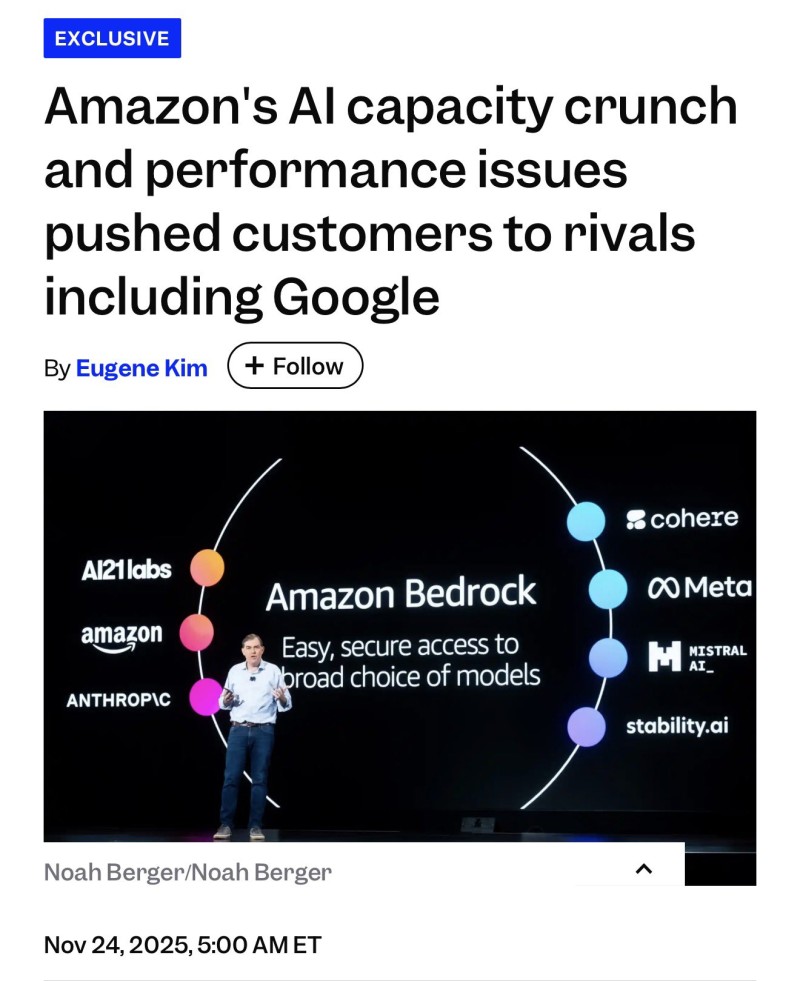⬤ Amazon's cloud division hit a wall earlier this year when its Bedrock platform ran into serious capacity constraints. Internal documents show the company couldn't deliver enough AI compute power to meet customer demand, and some clients ended up taking their business elsewhere—including to Google Cloud. Here's the thing: this happened right when generative AI workloads were exploding across the industry, putting AWS in a tough spot at exactly the wrong time.

⬤ Epic Games became one of the biggest casualties. The gaming giant had a $10 million Fortnite project lined up for AWS but ended up moving it to Google after Amazon couldn't supply the GPU quota needed for production. Internal teams estimated the capacity crunch cost Amazon tens of millions in lost and delayed revenue. The company had to start triaging requests, only prioritizing the highest-value deals. This came even though Amazon has been positioning Bedrock as a cornerstone of its AI strategy, offering access to models from Anthropic, Meta, Cohere, Mistral AI, and Stability AI.
⬤ Let's be real: this reflects how intense the infrastructure battle has become in cloud computing. Every major provider is scrambling to meet the demand for high-performance GPUs and accelerators. Availability itself is now a competitive edge. Google Cloud picked up business AWS couldn't handle, landing enterprise clients who needed reliable AI infrastructure right now. The shortage was significant enough that Amazon had to make hard choices about which customers got access and which didn't.
⬤ The situation puts a spotlight on where Amazon stands in the AI infrastructure race. With workloads scaling faster than anyone expected, reliability and resource availability are becoming deal-breakers for enterprise customers. How AWS responds to this capacity crisis could shape its position in the high-growth AI services market for years to come.
 Saad Ullah
Saad Ullah

 Saad Ullah
Saad Ullah


